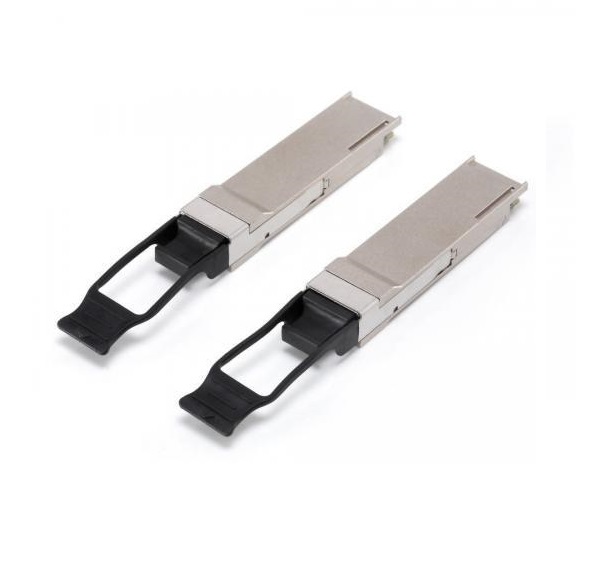- Sales SupportContact Sales
- Call us at: +(86) 15211074652
- Send us a email at: info@zr-fibercable.com
QSFP28 100G: Interoperability with 40G, 25G, and 10G
QSFP28 (Quad Small Form-factor Pluggable 28) is a high-speed optical transceiver module that supports data rates of up to 100 Gigabits per second (Gbps). It is widely used in data centers and high-speed networks for various applications. In addition to its native 100G capability, QSFP28 also offers backward compatibility with lower data rate modules such as 40G, 25G, and 10G. This interoperability allows for flexible deployment and smooth migration to higher speeds while leveraging existing infrastructure. In this article, we will explore how QSFP28 100G plays with 40G, 25G, and 10G modules, discussing the compatibility, cabling, and considerations for each scenario.
QSFP28 to 40G Connectivity:
QSFP28 transceivers can be used in conjunction with 40G QSFP+ (Quad Small Form-factor Pluggable Plus) modules to enable connectivity between 100G and 40G equipment. For this scenario, an MTP/MPO (Multi-Fiber Push-On) to LC breakout cable is typically used. The breakout cable has an MTP/MPO connector on one end, which connects to the QSFP28 transceiver, and four LC connectors on the other end, which connect to the four individual fibers of the 40G QSFP+ module. This allows for the conversion from 100G to four parallel 25G channels, enabling communication between the two different data rates.
QSFP28 to 25G Connectivity:
QSFP28 modules can also support connectivity with 25G SFP28 (Small Form-factor Pluggable 28) modules. This is achieved using a QSFP28 to SFP28 direct attach copper (DAC) cable or a QSFP28 to SFP28 fiber optic breakout cable. The DAC cable directly connects the QSFP28 and SFP28 modules, while the fiber optic breakout cable converts the 100G signal into four independent 25G signals. This enables communication between devices operating at different data rates.
QSFP28 to 10G Connectivity:
QSFP28 modules can be connected to 10G SFP+ (Small Form-factor Pluggable Plus) modules using a QSFP28 to SFP+ breakout cable. This breakout cable has a QSFP28 connector on one end, which connects to the QSFP28 module, and four individual SFP+ connectors on the other end, which connect to the four individual fibers of the SFP+ modules. This allows for the conversion from 100G to four parallel 10G channels, enabling communication between 100G and 10G devices.
Considerations and Limitations:
4.1. Transmission Distance:
When using breakout cables to connect higher-speed QSFP28 modules to lower-speed modules, it's important to consider the transmission distance limitations. The maximum transmission distance may vary depending on the cable type, fiber quality, and the specific modules used. It is recommended to adhere to the specifications provided by the transceiver and cable manufacturers to ensure reliable and error-free transmission.
4.2. Compatibility and Standards:
Interoperability between different data rates relies on the compliance of the transceivers and cables with industry standards. QSFP28 modules are designed to be backward compatible with lower-speed modules, ensuring compatibility and seamless communication. However, it is essential to verify the compatibility matrix provided by the equipment manufacturers to ensure proper functioning of the interconnected devices.

4.3. Network Planning and Future Scalability:
When deploying QSFP28 modules with backward compatibility, it's important to consider network planning and future scalability. Evaluate the current and future data rate requirements of the network to determine the appropriate mix of QSFP28, 40G, 25G, and 10G modules. Consider the potential need for upgrading to higher speeds in the future and ensure that the infrastructure can accommodate such changes.
Conclusion:
QSFP28 100G modules offer interoperability with lower data rate modules such as 40G, 25G, and 10G, allowing for flexible deployment and smooth migration to higher speeds. Breakout cables and direct attach copper cables enable connectivity between different data rates, converting the signals and channels as required. Considerations such as transmission distance, compatibility, standards compliance, and network planning are essential to ensure successful interoperability. By leveraging the backward compatibility of QSFP28, network administrators can optimize their infrastructure, maximize existing investments, and gradually transition to higher data rates as needed.
You might be interested in
We use cookies to ensure that we give you the best experience on our website. By clicking on "Accept" or continuing to use this site, you agree to our use of cookies in accordance with our Cookie Policy .You can refuse the use of cookies here.
Accept

